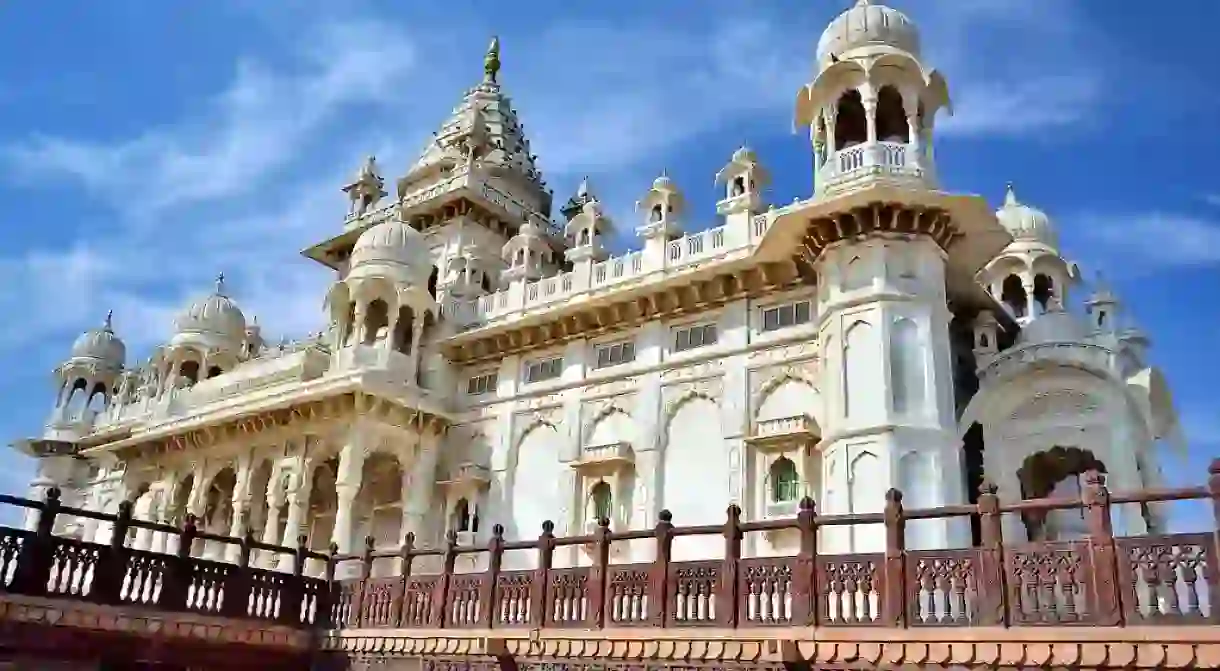A Brief History of Rajasthan, the Royal State of India

Rajasthan, the ‘Land of Kings’ as it is often dubbed, is one of the most visited states in India. With its opulent palaces, historic forts and plethora of cultural offerings, it wins over hearts at first glance. Here is a look at the history of the royal state of India.
Ancient civilization
Archaeological findings show that the royal land of Rajasthan has been inhabited for several thousand years. To be precise, it can be traced back to the Indus Valley Civilisation. The people of the Harappan times were the first to settle on the embankment of the Sarasvati River that originated in the Aravalli mountain range in Rajasthan. However, the region suffered severe climatic changes and was hit by floods, which led to its abandonment in the aftermath.
For quite some time, it remained without human settlements, until tribal communities, such as the Bhils and Meena, settled in the area. Also, the Aryans were believed to have settled in the area in around 2,000 BC, followed by the Mauryan dynasty during 321-184 BCE. However, due to the strategic location of the state and several ancient rivers, such as the Sarasvati and the Drishadvati flowing through it, the state went on to grab the interest of many empires like Hunas, Arjunyas, Yaudheyas and Saka Satraps, among others.

The Gupta dynasty conquered the state in the 4th century and built many Buddhist shrines and caves in the Jhalawar region. In the 6th century, the influence and control of the Guptas started declining. In 700 CE, the Gurjara-Pratiharas took over the Guptas as central power.
Medieval period
In the 9th century, the Rajput dynasty took over the state, the most thriving era in the history of Rajasthan. The Rajputs were warriors and under their rule, the state grew by leaps and bounds. If you stroll along the streets of Rajasthan, you will see majestic historic structures, including forts, palaces and temples built by the Rajput clan. But over the centuries, the Rajput empire was split up into 21 dynasties and 36 royal clans. The unity among them was lost.
In the 10th century, the Chauhans gained control of Rajasthan, but couldn’t reign over it for long. In 1192 CE, the Muslim sultanate defeated Prithviraj Chauhan of the Chauhan dynasty and conquered some parts of the state. Eventually, by 1200 A.D., the Muslim rulers established themselves in many parts of Rajasthan.

In the early 13th century, the most powerful seat was Mewar, which was still under the rule of the Rajputs. Almost every king had their eye on Mewar. It was Mughal emperor, Akbar, who started getting close to many Rajput rulers – he even married a Rajput princess, Jodha Bai, daughter of Amer’s Maharaja. Post-marriage, many Rajput rulers made an alliance with Akbar, which strengthened his control and power over the state. The combination of the Rajput clan and the Mughal empire influence is reflected even today in the historical and architectural landscape of the state.
However, there were some Rajput rulers, like Rao Chandrashekar Rathore (Marwar), Rana Udai Singh (Mewar) and Maharana Pratap (Mewar), who were against Akbar and never bowed down to him. They were in constant war with Akbar. In 1526, a battle between Akbar and Udai Singh took place, in which Akbar took over Chittorgarh, Mewar’s capital. After the defeat, the women of the Rajput clan committed self-immolation in order to protect their honour. Almost the entire Rajputana (now called ‘Rajasthan’) came under the control of Akbar.

In 1576, the Battle of Haldighati between Akbar and Maharana Pratap took place, in which Rana Pratap was severely injured and stayed in recluse for several years. In the meantime, Akbar captured Udaipur, Kumbhalgarh, Chappan, Gogunda and several other regions. Eventually, in 1582 during the Battle of Dewair, Rana Pratap fought back and freed Mewar and much of Rajasthan from the Mughals. This was the era that witnessed the gallantry and sacrifice of several Rajput and Mughal rulers. Some of the most prominent ones include Rana Udai Singh, Prithviraj Chauhan, Maharana Pratap, Rana Kumbha, Rana Sanga and Akbar, to name a few.

The rise of the Maratha Empire and the emergence of the British East India Company
In the early 18th century, the Maratha Empire began gaining power. Under the rule of Peshwa Baji Rao I of Pune, the Maratha Empire expanded to the north of Rajasthan and united with the Rajputs. Most of the Rajput-ruled kingdoms were under the control of the Maratha Empire and continued to flourish. However, the Marathas declined in power with the coming of the British East India Company in the late 18th century. Most Rajput states joined hands with the East India Company, which further resulted in the formation of Rajasthan (then known as ‘Rajputana’) as an independent state. The name ‘Rajasthan’ was popularised by James Tod, an East India Company employee, who was enraptured by the beauty and opulence of the state.
Rajasthan today
The royal state of Rajasthan that we see today was formed in seven stages and became the largest state of the Indian Republic. It has eight UNESCO World Heritage Sites and its magnificent palaces, bustling cities and indigenous hamlets remain the backbone of the state.













